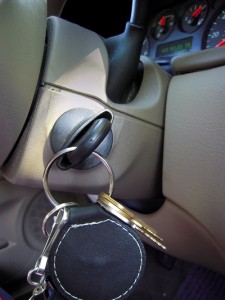 Were you arrested or issued a ticket for an OVI even though you believed you had passed the field sobriety tests given by the officer? It comes as a shock to many citizens who are charged with an OVI to discover that even though it felt like they were passing the field sobriety tests. Unfortunately, the telltale signs of inebriation that the officer is looking for can be dramatically different from what you believe you’re demonstrating during the test. Officers in Ohio are trained to look for specific behaviors and physiological symptoms that indicate a blood-alcohol content above the legal limit of 0.08.
Were you arrested or issued a ticket for an OVI even though you believed you had passed the field sobriety tests given by the officer? It comes as a shock to many citizens who are charged with an OVI to discover that even though it felt like they were passing the field sobriety tests. Unfortunately, the telltale signs of inebriation that the officer is looking for can be dramatically different from what you believe you’re demonstrating during the test. Officers in Ohio are trained to look for specific behaviors and physiological symptoms that indicate a blood-alcohol content above the legal limit of 0.08.
Field Sobriety Tests
Field sobriety tests are used by Ohio officers to determine the likelihood that a driver will have a blood-alcohol level of 0.08 or higher. Often, the officers will begin field sobriety testing with the Horizontal Gaze Nystagmus (HGN) test. What you’ll be asked to do is simple: follow a pen, light, or finger with your eyes as it moves back and forth. You may feel as if you are “passing” the test because you are able to follow the object with your eyes. Unfortunately, what the officer is watching for is nystagmus, a twitch that occurs involuntarily. Alcohol is not the only cause of nystagmus; other neurological conditions and chemicals (nicotine, caffeine) can also cause these twitches.
Balance tests are also used to test for sobriety. The officer will ask you to stand on one leg to help determine whether or not you are over the legal blood-alcohol limit to be driving. You may be able to stand on one foot for the full 30 seconds, but the officer is watching for other clues as well, including swaying, using arms to balance, or hopping – all of which can indicate to the officer that you have been drinking.
The walk and turn test is another common field sobriety test. You’ve likely seen something similar on TV shows or in movies. The driver is instructed to walk a straight line, with the heel touching the toe on each step. The driver is typically instructed to take a specific number of steps, then turn and return. Even if you walk a straight line during this test, the officer is also watching for other clues of inebriation, including an inability to follow instructions, an inability to keep heel and toe together, and pauses during the test.
What to Do If You Get an OVI
Operating a vehicle while impaired, or OVI, is a broadened scope of a driving under the influence charge, and you don’t even have to be currently driving the vehicle to be charged with OVI. If the officer is unable to determine if you drove the vehicle, you can be charged under the Physical Control statute. If you are charged with an OVI, it is important to get an experienced Ohio OVI attorney who is familiar with the administration of field sobriety tests to help you.
It is possible to fight OVI and Physical Control charges, but an experienced attorney who is familiar with the tests and equipment used by Ohio officers can help. This is particularly crucial if you were charged with an OVI after a breathalyzer or blood test. If you have been charged with an OVI or Physical Control crime in Cleveland or Northeast Ohio, you will need an experienced criminal attorney to help you navigate the criminal process. For more information and a free consultation, please contact Jeff Hastings, experienced Cleveland Criminal Defense Attorney.

